The king of Northern California’s great white sharks, dubbed Mr. Burns, hasn’t been seen at his usual Tomales Point haunts for the first time in over 16 years, prompting concerns about the respected sea beast’s wellbeing.
A 17-foot-long great white with a bite-shaped chunk of flesh missing from his dorsal fin, Mr. Burns first made his presence known to researchers in 2007.
Known as the “great patriarch (opens in new tab)” of NorCal’s waters, the shark is an annual visitor to the boat of California White Shark Project researchers Paul Kanive and Scot Anderson, who named him after the billionaire nuclear power plant owner on The Simpsons, whose overbite is almost as prominent as a shark’s teeth.
Over the years, the massive shark has wised up to their tactics of using decoy seals to draw him close to their boat for examination. Still, Kanive said, he was surprised he didn’t see Mr. Burns last winter, even from a distance.
“He’s like an old friend at this point,” Kanive told The Standard. “Mr. Burns has been so reliable and consistent. If the years start to pile up where we don’t see him, it doesn’t give us a great feeling.”

He noted that Mr. Burns may have chosen a different part of the coast to hunt for food as the Tomales Point shark population has declined over the years. However, other, less optimistic explanations also come to mind.
Mr. Burns is known to show up with gruesome battle wounds, likely caused by seals or other sharks. Also, the illegal poaching of great whites remains a problem, particularly off the coast of Mexico, Kanive said.
“Whether he just wasn’t there or he passed on, it’s just very weird and not like him to not visit Tomales Point,” Kanive said.
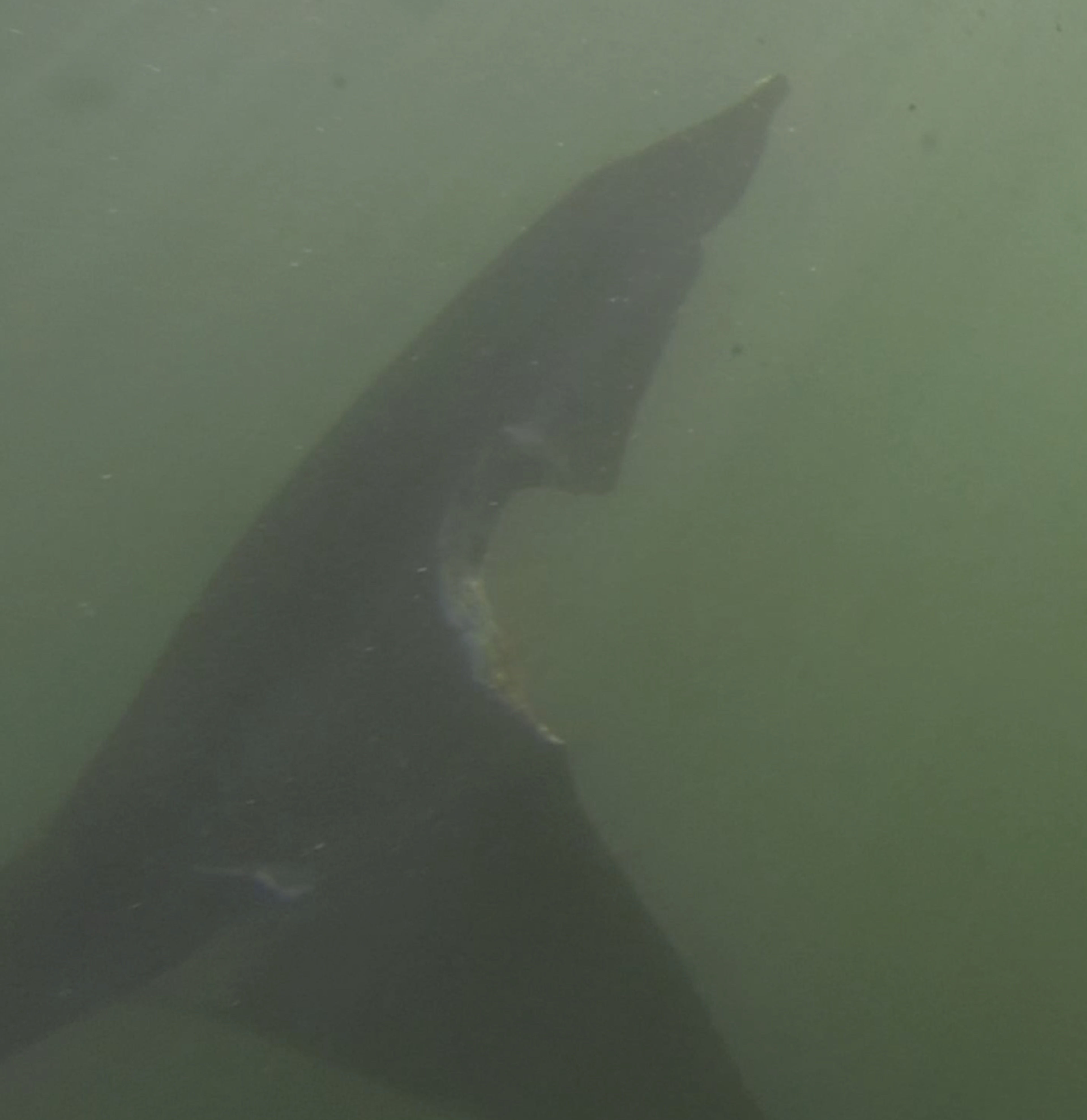
Kanive estimates that over 250 adult great white sharks pass by the coast of Northern California between August and February before migrating to a “Shark Cafe” in a remote part of the Pacific Ocean where they perform secret rituals. (Great white mating habits remain a mystery, as there are no recorded instances of them having sex or giving birth.)
There are still parts of California’s coast the sharks are known to frequent. The stretch of water between Big Sur, Bodega Bay and the Farallon Islands is known as the “Red Triangle,” as it’s a hotbed for white shark activity. Drake’s Beach, one of the closest beaches to the Farallon Islands and where Point Reyes’ elephant seals thrive, has seen a rise in its shark population in recent years, according to the National Park Service (opens in new tab).
While Mr. Burns wasn’t spotted this year, some of his friends—or enemies—are still trawling the waters around the Bay Area. It’s unclear which of these sharks—if any—may have been beefing with the great Mr. Burns. But here are some of our top suspects.
Chomp
The name just makes for a terrible alibi. It seems too coincidental that Mr. Burns has a bite-shaped chunk of flesh missing from his fin. Meanwhile, a shark known for its ferocious bite is often seen nearby.
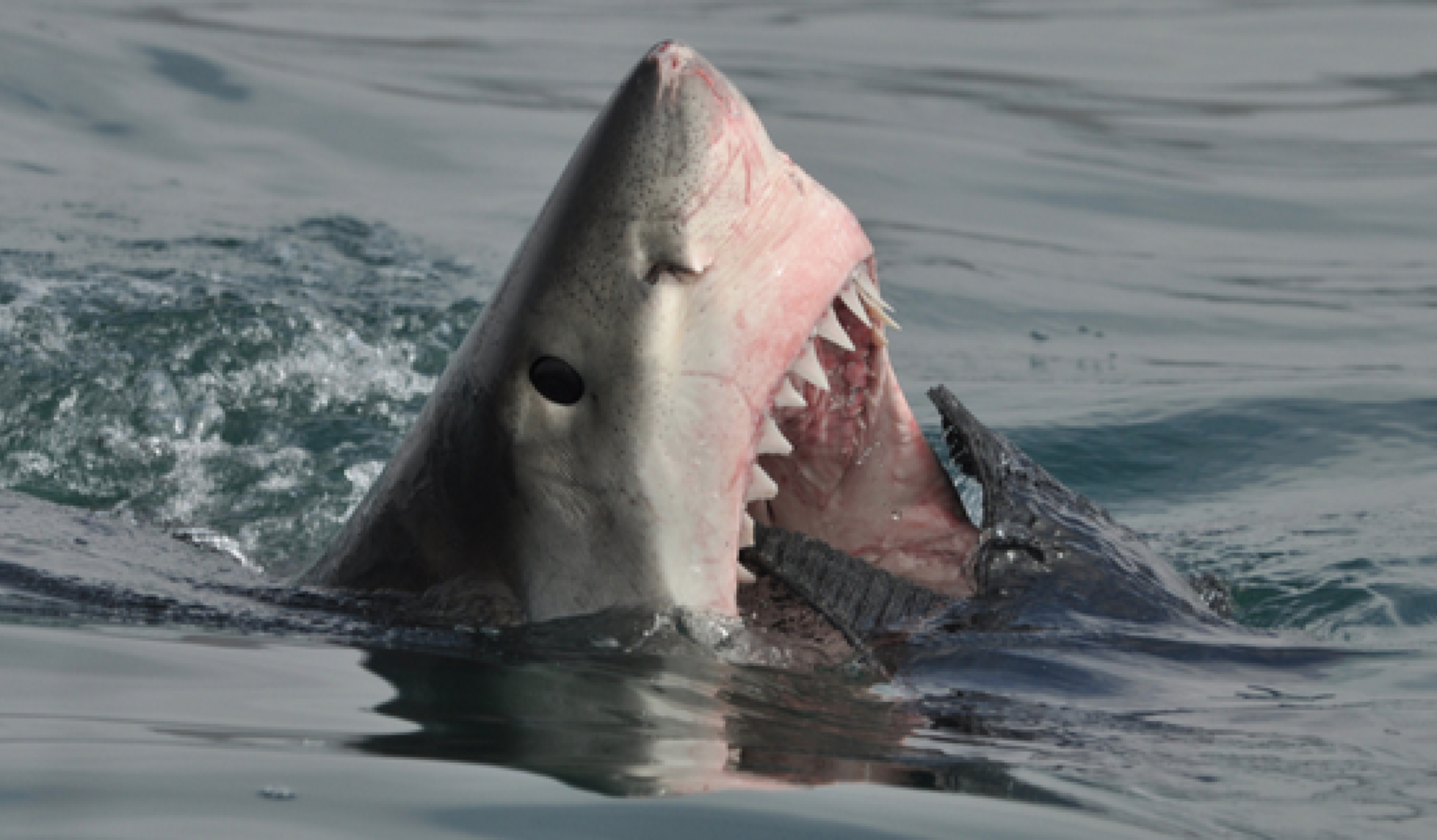
Spicoli
Watch out for the quiet ones. Spicoli, a 10-foot great white, has a reputation for being “super chill.” But that doesn’t mean we’re ruling her out.
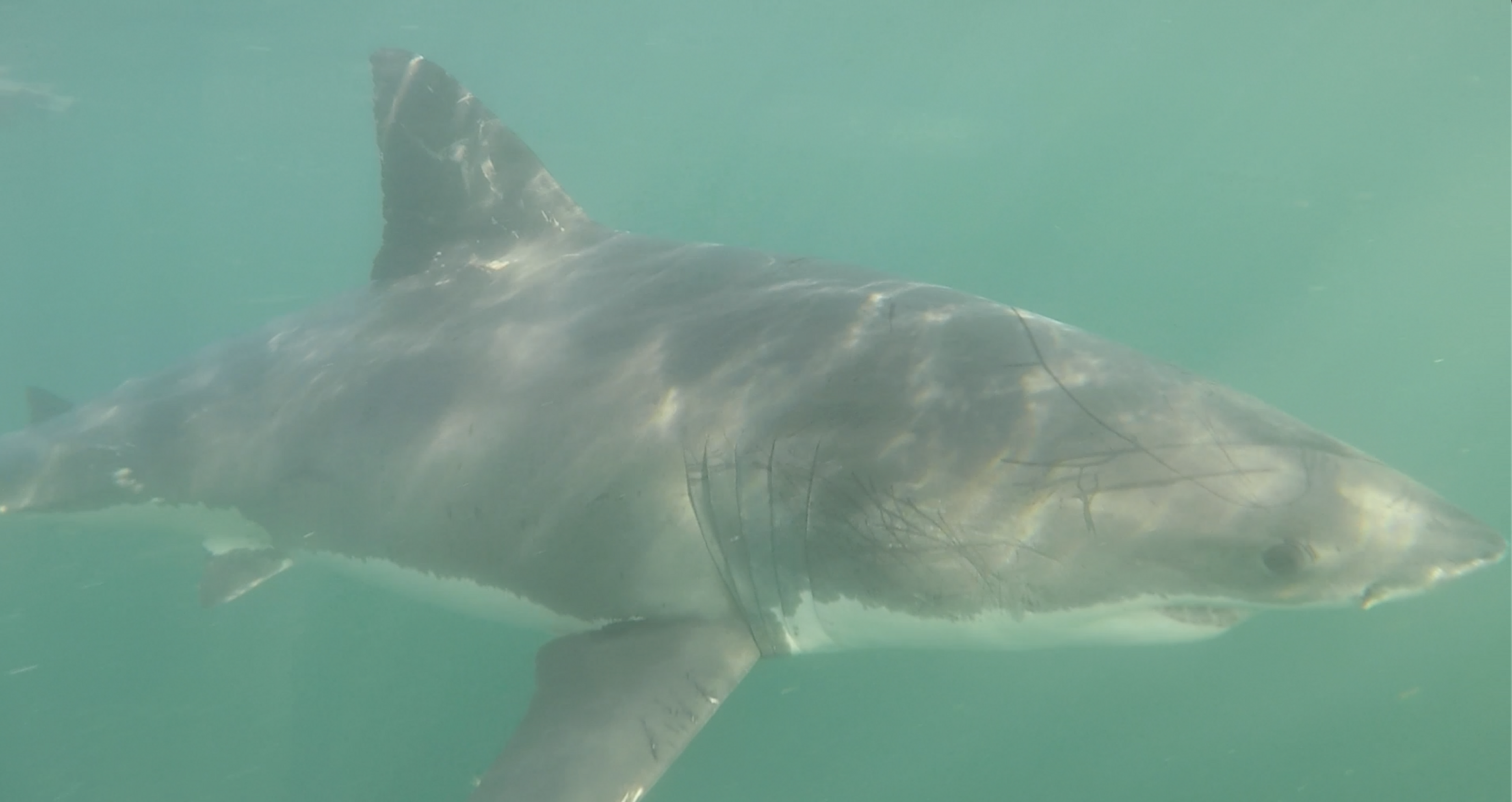
Yvon Chouinard
Just because he’s named after the Patagonia founder and environmentalist who famously promised to give away his entire fortune last year, doesn’t mean this shark shares the same philanthropic spirit. In fact, Kanive said the 75-year-old shark earned the name mostly by chance.
“The world needs more Yvon Chouinards,” Kanive said. “The only way I could think about doing that is by naming a shark.”
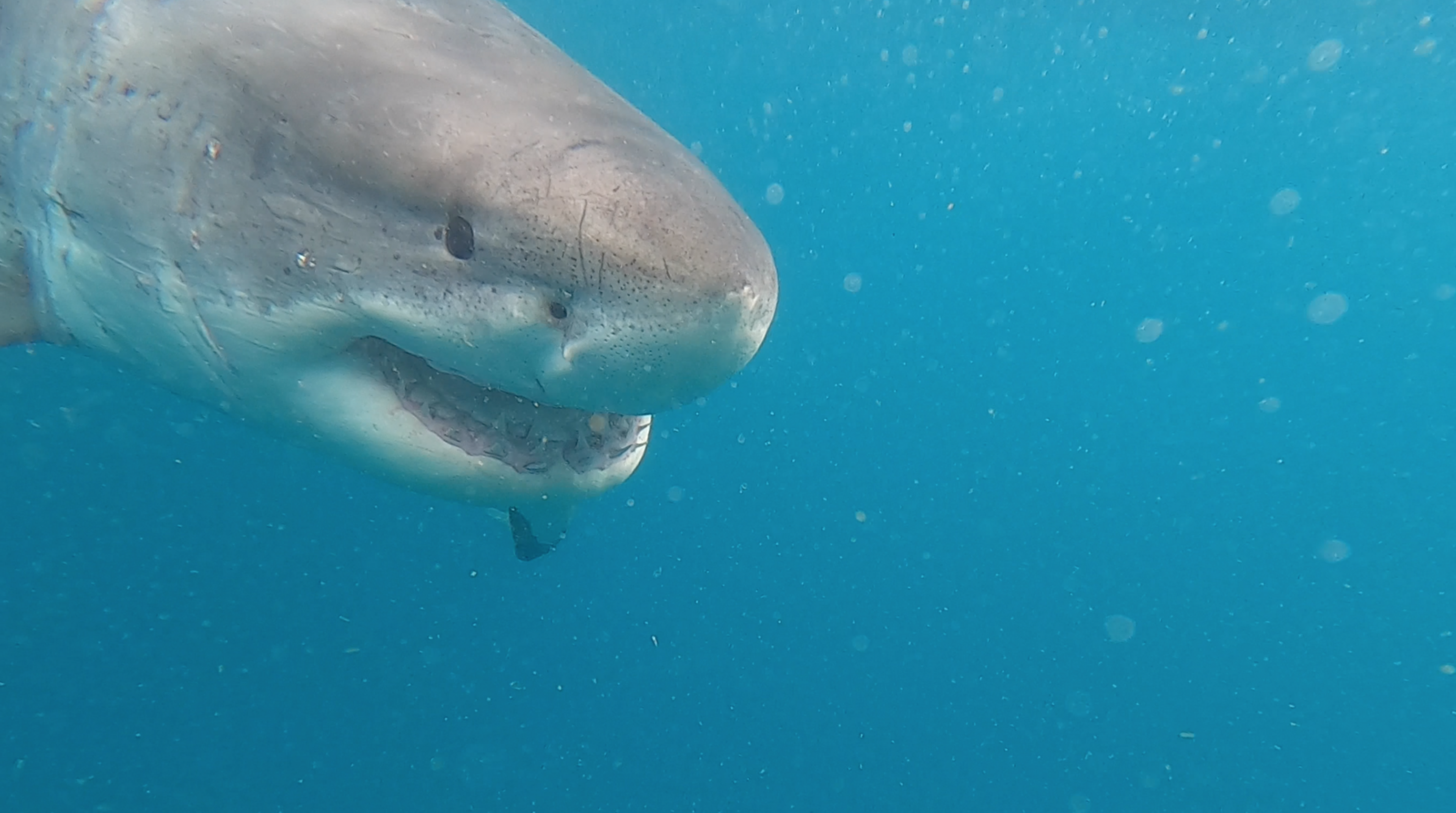
Otter 841
Despite expert opinions disputing the probability of this explanation, we think there’s a chance the infamous surfboard-stealing Otter 841 in Santa Cruz may have taken down Mr. Burns. The otter caused havoc last summer by aggressively approaching surfers at the surf spot Steamer Lane, which led to national headlines and a months-long hunt for the pesky sea weasel.
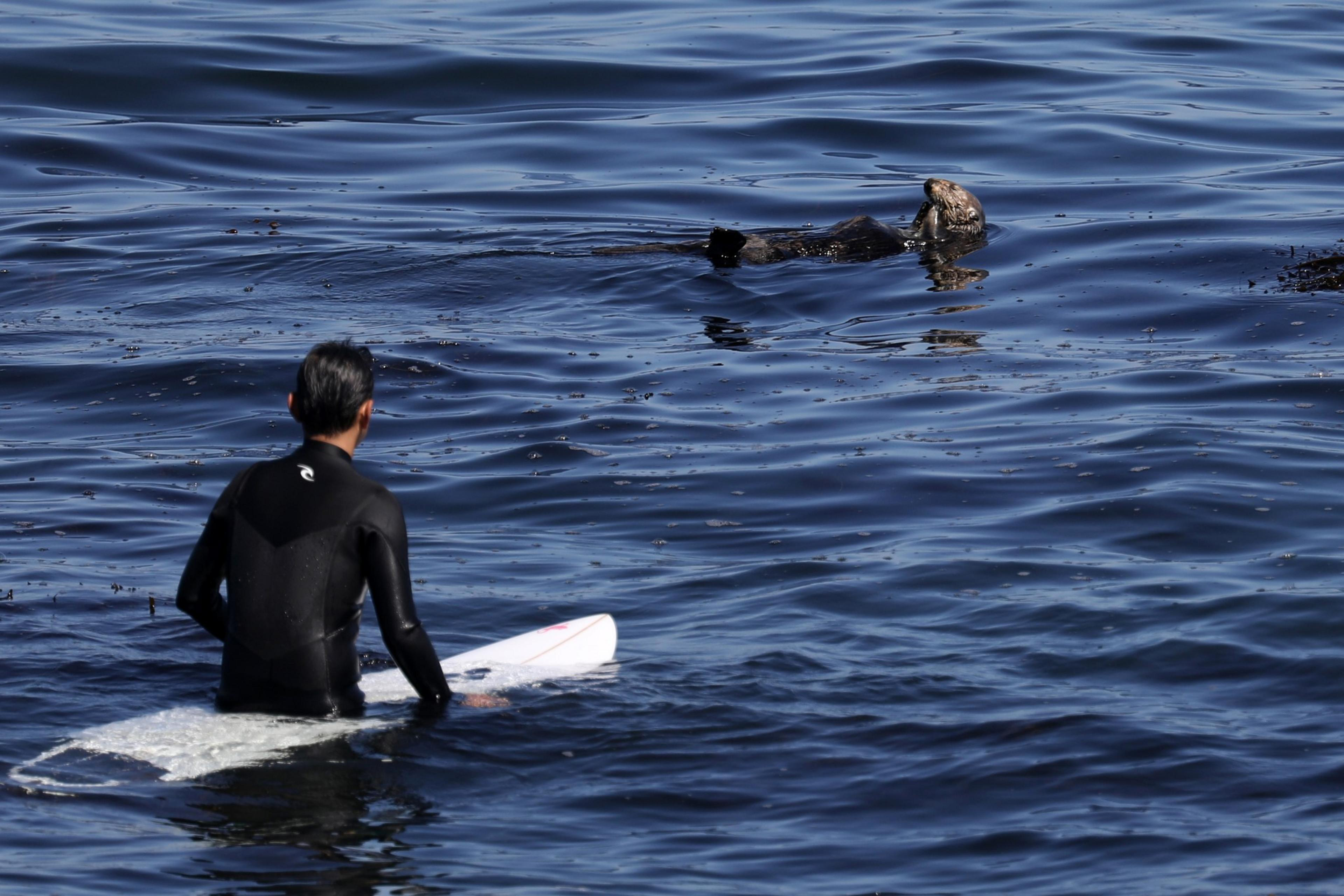
Waylon Smithers
After decades of taking insults from his abusive, 104-year-old boss—known for outrageous schemes like plotting to block out the sun—perhaps Waylon Smithers (opens in new tab), Mr. Burns’ bow-tied assistant, finally reached his limit.
